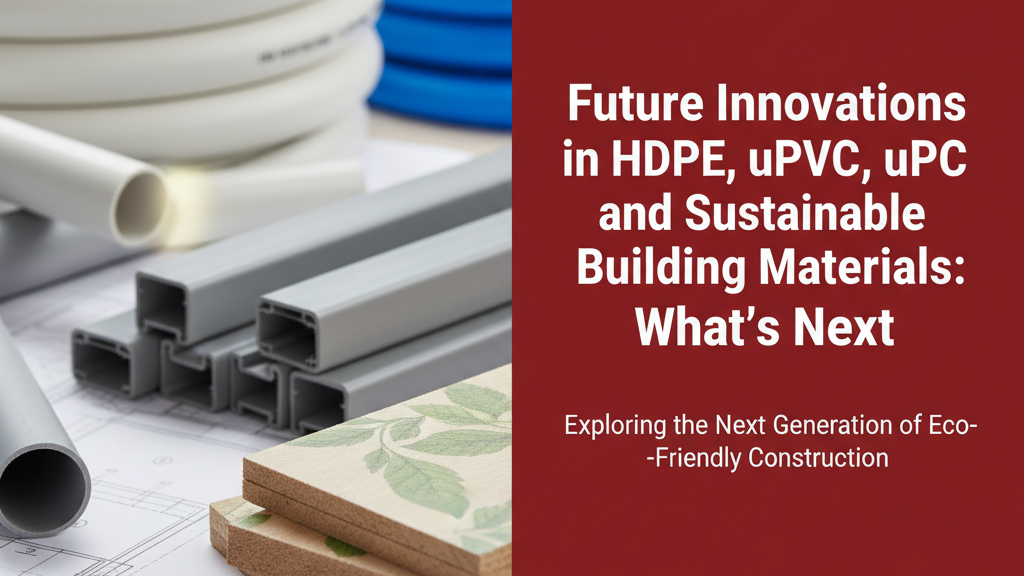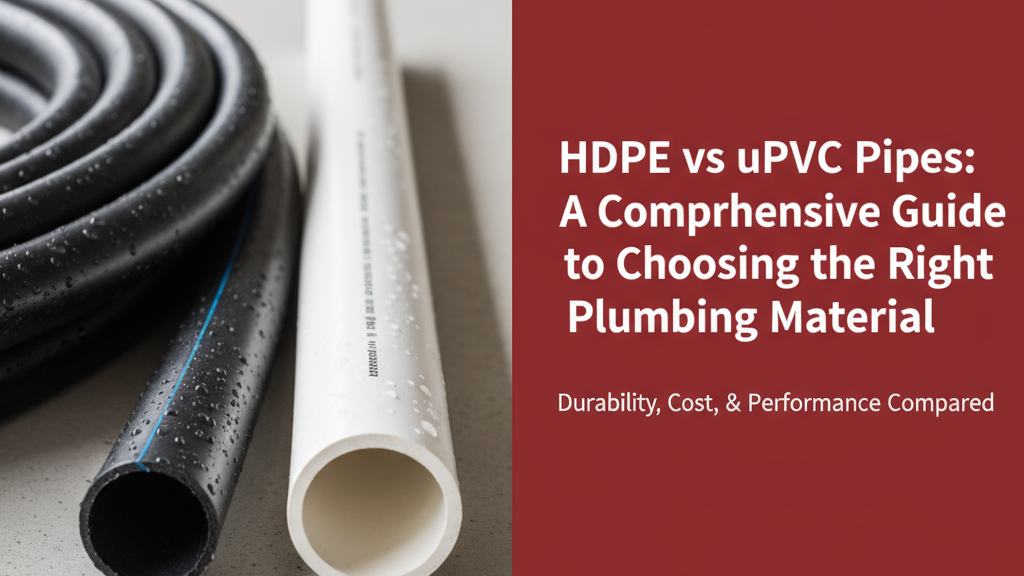The Evolution of HDPE in Construction
High-density polyethylene (HDPE) pipes have become indispensable in modern Indian construction due to their corrosion resistance and flexibility. Recent innovations focus on:
- Bio-based HDPE: Developing formulations using sugarcane ethanol to reduce fossil fuel dependence
- Self-healing variants: Microcapsule technology that seals minor cracks autonomously
- Conductive HDPE: Embedding carbon nanotubes for leak detection systems
These advancements address India’s need for durable water management solutions in extreme monsoon conditions and seismic zones.
Breakthroughs in uPVC Technology
uPVC doors and windows are undergoing silent revolutions beyond multi-chambered designs:
| Innovation | Performance Benefit |
|---|---|
| Titanium dioxide-infused | Self-cleaning surfaces reducing maintenance in dusty areas |
| Variable density profiles | Zoned sound insulation (45-52 dB noise reduction) |
| Phase-change additives | Thermal lag reduction by 3-5°C in peak summers |
Advancements in Sustainable Building Materials
The Indian construction industry is witnessing these green material shifts:
- Recycled content blends: Post-consumer waste integration in pipes and fittings
- Low-carbon production: Solar-powered extrusion processes reducing embodied energy
- Cradle-to-cradle systems: Takeback programmes for old uPVC/HDPE products
Eco-Friendly Alternatives
Emerging bio-composites challenge conventional plastics:
“Rice husk-reinforced polymers demonstrate 80% of HDPE’s tensile strength while being compostable.”
Practical considerations dictate gradual adoption:
- Moisture resistance remains inferior to uPVC/HDPE in humid climates
- Cost premiums of 15-25% currently limit mass adoption
- Lack of standardised testing protocols for tropical conditions
Smart Materials and IoT Integration
Building materials are becoming sentient systems:
- Pressure-sensitive HDPE pipes: Detect leaks through embedded fibre optics
- uPVC with humidity sensors: Window frames that signal ventilation needs
- Photovoltaic window glazing: Energy-generating uPVC composites
Implementation challenges include IoT durability in monsoons and standardised connectivity protocols.
Challenges and Opportunities in Material Innovation
The Indian context presents unique considerations:
| Challenge | Emerging Solution |
|---|---|
| High-temperature performance | Ceramic nanoparticle additives |
| Skill gaps in new installation techniques | Augmented reality-assisted joining methods |
| Recycling infrastructure limitations | Modular product designs for easier disassembly |
Future Trends to Watch in the Industry
Five developments likely to shape North Indian construction:
- AI-optimised material formulations for regional climate variations
- 3D-printed uPVC/HDPE hybrid components reducing wastage
- Blockchain-tracked material provenance for quality assurance
- Phase-change uPVC stabilisers extending lifespan beyond 50 years
- Co-extruded pipes with inner antimicrobial layers
These innovations promise to maintain SBM Gold’s core values of durability while addressing sustainability mandates.


